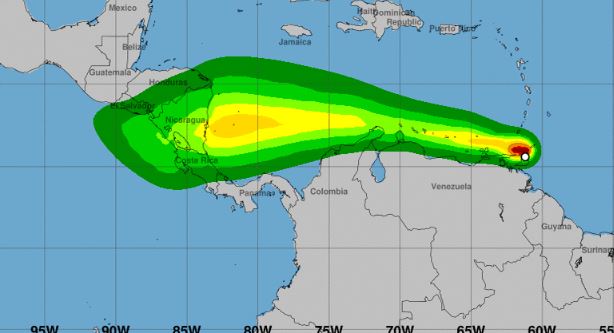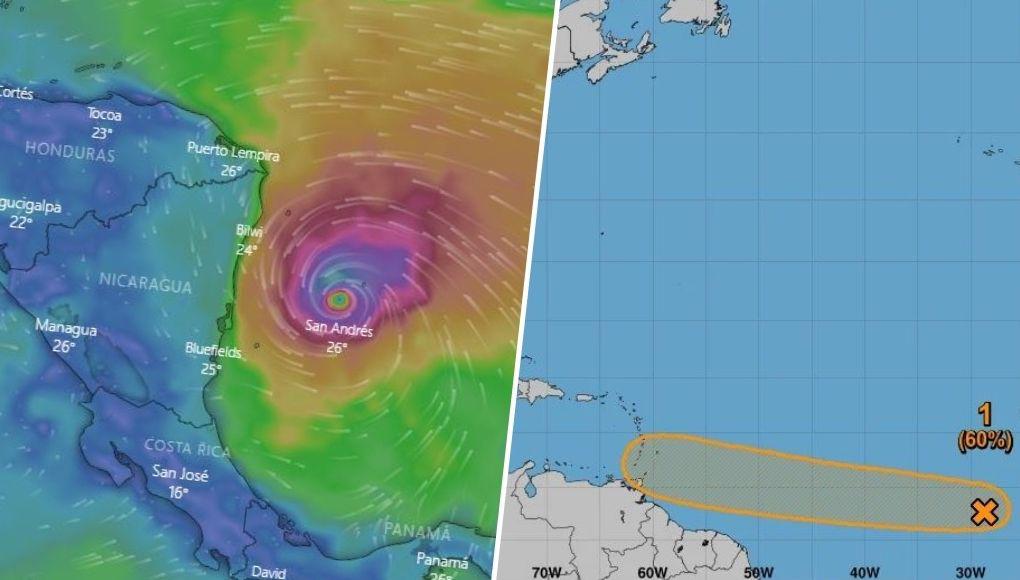-The potential cyclone “Two” became “Bonnie” this Friday, the second tropical storm this year in the Atlantic, which is approaching Nicaragua and Costa Rica with maximum sustained winds of 40 miles per hour (65 km / h) reported the US National Hurricane Center (NHC).
“Bonnie” is located about 230 miles (370 km) east of Bluefields, on the Caribbean coast of Nicaragua.
Its translational speed is 20 miles per hour (31 km/h) and it is moving towards the west.
On the forecast track, the system will move across the southwestern Caribbean Sea today, cross southern Nicaragua or northern Costa Rica tonight, and emerge over the eastern Pacific Ocean on Saturday.
It will then move offshore but parallel to the coasts of El Salvador, Guatemala and southern Mexico from Saturday to Monday with possibly stronger winds.
Several warnings and surveillance orders are in effect for the passage of this system for areas of Nicaragua, Costa Rica and the Colombian island of San Andrés.
Related news: Storm Bonnie will enter Nicaragua this Friday night
The most important is a hurricane watch (passage of the system in 12 to 24 hours), which covers from the border of Nicaragua and Costa Rica to the Pearl Lagoon, in the first of the two countries.
The NHC encourages interests elsewhere along the Caribbean and Pacific coasts of Nicaragua and Costa Rica, as well as the Pacific coasts of El Salvador, Guatemala, and southern Mexico to follow the advancement of this system.
According to the NHC, the chance of a named storm forming is 90% in both the 48-hour and five-day forecasts.
The potential tropical cyclone is expected to produce heavy rains in Nicaragua and Costa Rica from today through Saturday, which could result in localized flash flooding and landslides.

It can also produce a storm surge, with seas rising up to 3 feet (almost a meter) above normal tide levels in the area where it makes landfall.
So far in the current hurricane season in the Atlantic, which began on June 1 and, according to the meteorological services, is going to be more active than normal, there has only been one named storm, Alex, which formed on June 5 near the Yucatan Peninsula with the remnants of Hurricane Agatha, the first formed this year in the Pacific area.
Alex caused rains in the Yucatan, western Cuba and southern Florida.

















